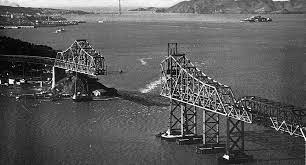In the year 1901, the United States experienced a dynamic period of growth and transformation, marked by significant advancements in technology, industry, and infrastructure. Although specific details about bridge construction on January 18, 1901, are not readily available, examining the broader context of that era provides insight into the remarkable developments in bridge engineering and construction during that time. At the turn of the 20th century, the United States was undergoing a profound shift from an agrarian society to an industrialized nation. This transition necessitated the expansion and improvement of transportation networks, and bridges played a crucial role in connecting regions, facilitating trade, and fostering economic development. The year 1901 witnessed the continued evolution of bridge construction techniques and materials. Engineers and architects were experimenting with new designs and materials, moving away from traditional materials like wood and stone towards more robust and durable options such as steel and concrete. The implementation of these modern materials allowed for the construction of longer spans and more resilient structures, meeting the increasing demands of a rapidly expanding population and economy. Steel emerged as a particularly influential material in the construction of bridges during this period. The use of steel provided bridges with enhanced strength and durability, enabling engineers to design larger and more innovative structures. Steel truss bridges, characterized by their intricate lattice framework, became emblematic of this era and were widely used in various locations across the country. One notable project from this time is the Williamsburg Bridge in New York City, which opened to the public on December 19, 1903. While not directly related to January 18, 1901, this suspension bridge exemplifies the ambitious and groundbreaking bridge construction efforts of the early 20th century. The Williamsburg Bridge connected the boroughs of Manhattan and Brooklyn, significantly improving transportation between these populous areas. In addition to the physical advancements in bridge construction, the early 1900s also marked the emergence of influential figures in civil engineering. Engineers such as Gustav Lindenthal and John A. Roebling's son, Washington Roebling, continued to push the boundaries of bridge design and construction. Their expertise and innovative approaches contributed to the creation of iconic structures that not only served utilitarian purposes but also became symbols of progress and modernity. While specific details about bridge construction on January 18, 1901, are elusive, the broader context of the time underscores the transformative nature of the era in American bridge engineering. The construction of bridges during this period was a testament to the nation's commitment to progress, connectivity, and the development of infrastructure that would shape the landscape for generations to come.
18 January 1901 U.S.A. Bridges Buil
